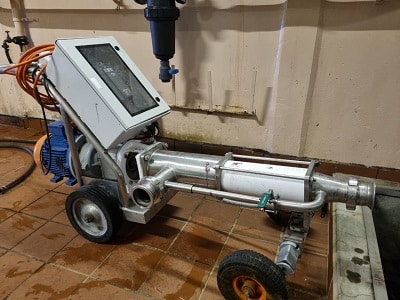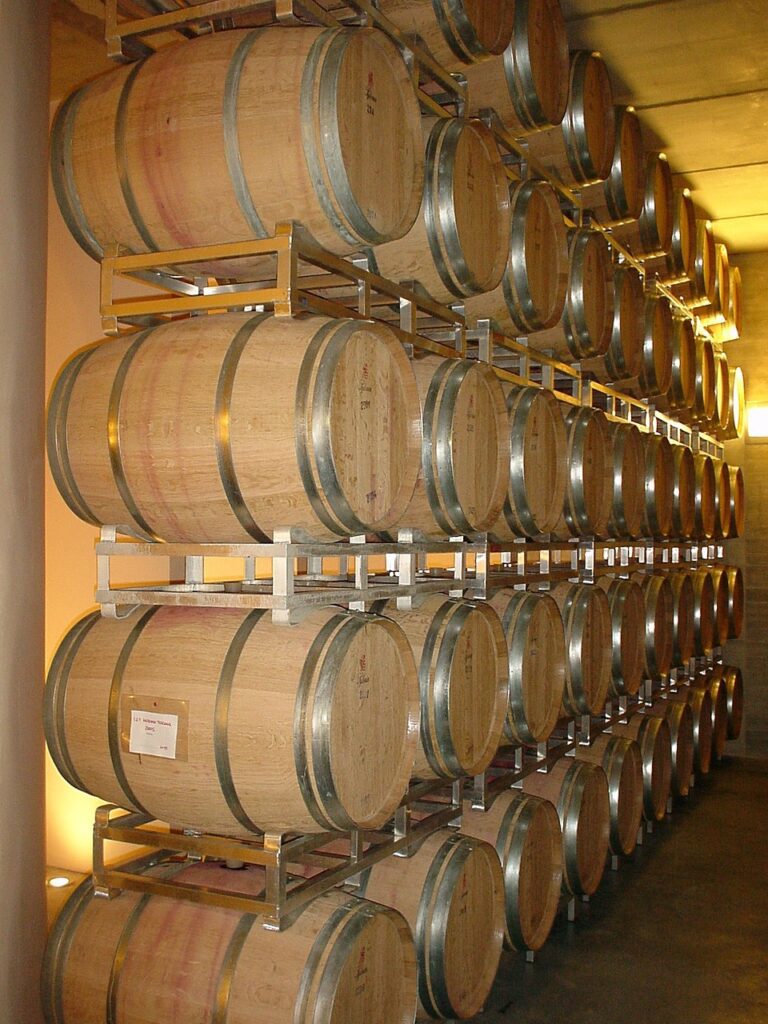Pumps are one of the essential pieces of equipment in cellars because winemaking is a process of transforming solids into a liquid form. The latter’s specifications can however differ considerably.
A fluid transfer is a complicated process due to the variation in the characteristics of liquids. The following parameters influence the choice of pumps, which contribute to the (un)suitability of individual pump types:
- Minimisation of shearing and agitation during transfer.
- Oxygen exposure.
- Tolerance to solids and sediment.
- Self-priming.
- Portability.
- Ease of operation.
- Cost-effectiveness.
Centrifugal pumps
Centrifugal pumps spin an impeller in a housing. The latter is designed to direct the fluid from the impeller to the exit nozzle. Centrifugal pumps do not create high-pressure exits, limiting potential rupturing of containers or hoses. However, they are rough on the liquid pumped and thus not suitable for finished wines.
Moineau (Mono-) pumps
These pumps operate by rotating a helix-formed rotor in a helix-shaped elastomeric rotor. The advantages of this type are positive displacement, high solids resistance, flow rate variability, easy cleaning, good portability and large volume suitability. It is costly, but this should be balanced with hundreds of thousands of litres of transfer capacity.
Peristaltic pumps
Peristaltic pumps have various advantages. The main one is tolerating dry running, preventing the burning out of the pump. They can also run at a low variable rate, handle high solid content, and are easy to maintain. A significant drawback is, however, its limited portability due to its irregular shape and size.
Flexible impeller pumps
Flexible impeller pumps are an excellent option to create high pressure when transferring a liquid. Impeller wear may be problematic because resulting particles can land in the wine. It is suitable for lees transfer and pump overs, but not for finished wines.
Diaphragm pumps
Diaphragm pumps work by contracting a rubber diaphragm to pull wine into a chamber through an inlet valve and then expanding the diaphragm to push the wine out of the chamber through an exit valve. It is excellent for wine transfer but has certain limitations. The advantages include self-priming, easy cleaning and also being able to run dry without burning out. They are, however, not easily reversible and seeing that these pumps are air-powered, suitable air compressor capacity is required. It is also difficult to sanitise, having many parts in contact with the wine.
Gear and rotary lobe pumps
The principle of these pumps is to move liquid in the space outside of the gear teeth and the sealing where the teeth mesh. A variation of this type uses rounded lobes instead of sharp teeth. The transfer of the wine is very gentle without aggressive agitation. These pumps are portable, reversible, easy to clean, and have a high solid tolerance. The smaller capacities of the pumps are not very suitable for must. The stainless-steel gears or lobes can easily be damaged by foreign materials like staples in must. Rotary lobe pumps are the best option if you choose only one pump. They also do not over-pressurise cellar equipment like tanks, barrels and hoses.
Unfortunately, like most cellar equipment, a fit-for-all-purpose pump does not exist, and all characteristics must be considered before a final choice is made.

Centrifugal pump.

Mono-pump with invertor.
Reference
Le Lacheur, P., 2022. Choosing the right winery pump. The pros and cons of pumping options for winemakers. Australian and New Zealand Grapegrower and Winemaker, December 2022: 60 – 62.
Click here to get your copy of WineLand Magazine and here to subscribe to our newsletter.













